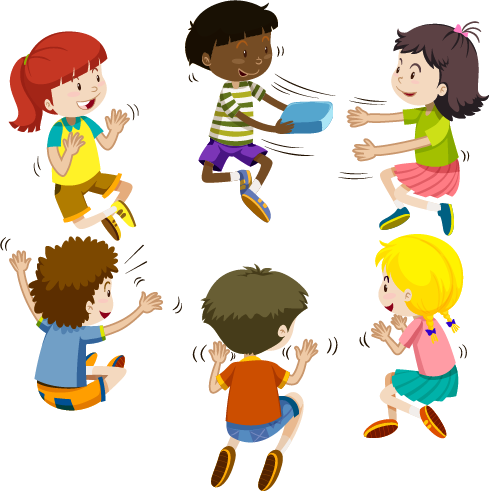Y1. Lesson 29. Crotchet rest - za
Prior learning: Ta & ti-ti
Duration: 30 minutes
Materials:
Keywords: Beat, rhythm, singing, chanting, partners, rhymes, circle games.
Difficulty: ![]()
Prepare
Present
Za
Practise
La
 Melodic development
Melodic development
![]() Students discover the crotchet rest za and reinforce their recognition of the solfa note la.
Students discover the crotchet rest za and reinforce their recognition of the solfa note la.
 Questions
Questions
- This song can be used to reinforce students' ability to recognise la but also to demonstrate the crotchet rest, za.
- Lead the class in singing the song and drawing students' attention to the note la.
- If you use hand signs in your teaching method, ask students to sing and use hand signs to show so, mi and la.
- Ask students to count how often la is used in the song as they sing it again.
- When secure, ask students to clap the beat of the song but use inner hearing to sing the first two lines in their heads.
- Ask what the music is doing after the words 'cat" and "fat".
- Explain that the music is silent on those words, even though there is a beat.
- Teach that when there is silence on this beat, it is called a rest and given the time name za.
- Draw attention to the fact that the time name za lasts as long as ta, except it is silent.
 Rhythmic development
Rhythmic development
![]() Students discover that a beat of silence is a rest and called za.
Students discover that a beat of silence is a rest and called za.
- Students are seated and attentive.
- Lead the class in singing Pumpkin Pumpkin.
- When secure, ask students to sing and clap the beat for the first line.
- Ask students what happens on the last beat [silence].
- Teach that this beat of silence is called a rest and given the solfa name za.
- Ask students to sing the second line and clap the beat and ask again what happens on the last beat.
- Invite students to sing the song using time names only, including the new name, za.
 Creative movement
Creative movement
![]() Students use props and answer questions in this circle game.
Students use props and answer questions in this circle game.

- Here is a great game to spice up your classroom for interactive fun.
- First, write five engaging questions to get your students reflecting and connecting, such as "What food do you like?" and "Do you play an instrument?"
- Then, arrange your class in a circle and pass around a prop, like an egg shaker, puppet or ball.
- Play music to add to the excitement, and watch your students light up as they pass the prop around.
- The piano for Here We Go Round The Mulberry Bush is below for your convenience.
- When the music stops, the student holding the prop must answer one of the questions on the board.
- With this activity, you'll get to know your students better and create a fun and engaging atmosphere for everyone to enjoy.
 Listening
Listening
![]() Students refresh their knowledge of tempo.
Students refresh their knowledge of tempo.
- Students are seated and attentive.
- Play each track on the audio player and ask students to listen carefully.
- Firstly, ask if students recognise the music. Then ask whether the music becomes faster or slower.
- Remind students that the music changes tempo when it gets faster or slower.
- Remind students that tempo is the speed at which a piece of music is played.
- Explain that each piece of music they hear starts at one tempo and finishes at another. It either starts slowly and ends faster or begins fast and becomes slower.
 Visual learning
Visual learning
![]() Students discover how to draw a crotchet rest [za]
Students discover how to draw a crotchet rest [za]
- Often, students find drawing the crotchet rest challenging.
- There are several ways to teach this symbol.
- One way is to teach the short phrase "zig, zag, zig, c". Here the student will draw a zig-zag and then the letter 'c' at the end of the zig-zag.
- Another method is to draw the right side of the letter “R”, omitting the vertical, or start with the number “2” but pull the horizontal line down on the right. Put the hook on the bottom, and it’s done!
![]()
 Instruments
Instruments
![]() Students use untuned percussion to play the beat and rhythm of a known classroom song.
Students use untuned percussion to play the beat and rhythm of a known classroom song.
- Divide the class in two.
- Distribute triangles and woodblocks to each half.
- Demonstrate how to keep the beat using a woodblock, showing how to hold the block and beater correctly.
- Demonstrate how to hold a triangle and beater and how to make a clear sound.
- Begin by leading the class in singing the song.
- Repeat and invite students holding woodblocks to keep the beat as the class sings again.
- Demonstrate the rhythm on the triangle and lead the class in keeping the rhythm on the triangle.
- When both groups are secure (and this may take a few attempts), lead the class by conducting in duple metre.

 Part work
Part work
![]() Students use inner hearing and practise rhythmic ostinato with a well-known song.
Students use inner hearing and practise rhythmic ostinato with a well-known song.

- Students form a circle. Explain that the class will sing Rain Rain.
- Lead the class in singing the song while you clap an ostinato pattern of ta, ta, ti-ti, ta.
- Ask the class if you were clapping the rhythm or an ostinato.
- Repeat the song, clapping the ostinato pattern.
- Ask the class to sing and clap the ostinato pattern.
- Tell the class to keep the song in their heads as they clap the ostinato.
- Offer praise and gentle guidance if required.
 Assess
Assess
Suggested lessons
Y1. Beat II

Y1. Beat III

Y1. Beat IV

